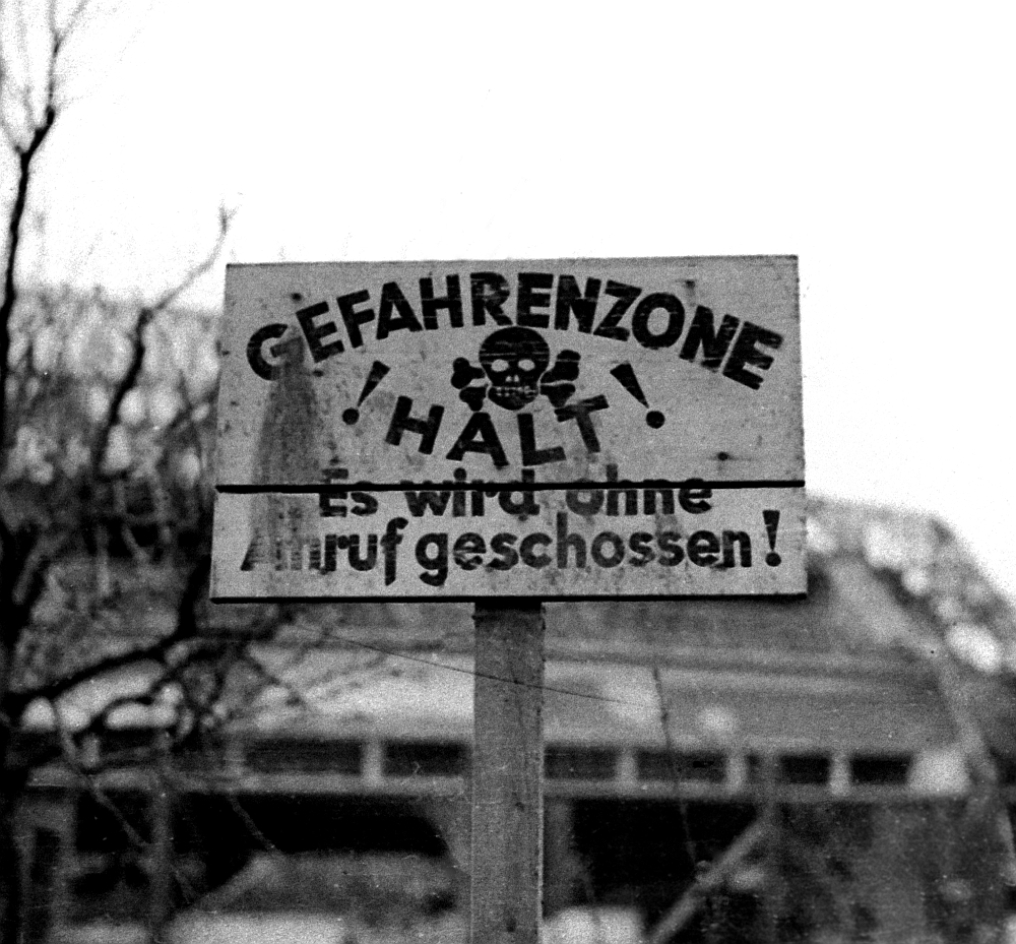

The Boelcke-Kaserne was a military caserne built in the mid-1930s and housed a Wehrmacht air intelligence school until the summer of 1944. At the end of the war, concentration camps and forced labour camps as well as a Gestapo prison were located in the immediate vicinity on the extensive site. It is therefore exemplary of the dense network of different types of camps that covered the entire Reich during the Second World War.
Forced labour camp
From 1943, around 200 Soviet and French female workers from the company MABAG (Maschinen- und Apparatebau AG) were housed in five wooden barracks on the caserne grounds. In the early summer of 1944, Junkers Flugzeug- und Motorenwerk set up a "foreign labourer camp" in the crew quarters of the Boelcke-Kaserne, which had been cleared by the Luftwaffe, for 6,000 foreign forced labourers who had to assemble jet engines for Junkers in the northern part of the tunnel system in the Kohnstein.
Gestapo prison
From autumn 1944, there was a Gestapo prison in the detention building at the casern entrance, where not only "foreign workers" but also inmates from the Mittelbau concentration camp were held. In addition to the prison, the Gestapo set up a special camp in the barracks, to which foreign civilian workers from the surrounding area were sent if they were accused of "labour dumping" or other offences.
Camp for sick and dying inmates of the Mittelbau concentration camp
In January 1945, the SS also set up a subcamp of Mittelbau concentration camp in the casern. Initially, the camp was to house inmates who had to perform forced labour at Nordhausen companies. From February 1945, the SS used the barracks as a central camp for sick and dying inmates of the Mittelbau concentration camp, to which inmates who were no longer fit for work and terminally ill were deported. Two empty garage halls served as accommodation for the inmates. There were no beds nor washing facilities; the inmates lay on the concrete floor and were largely left to their own fate. From January to the beginning of April 1945, over 3,000 people died in the subcamp.
The former Boelcke-Kaserne today
Apart from three garages, little remains of the former Boelcke-Kaserne today. Since 1974, a memorial stone at the entrance to the former camp site, where industrial companies settled after the war, has commemorated the victims of the subcamp. A plaque was added in 2004.
